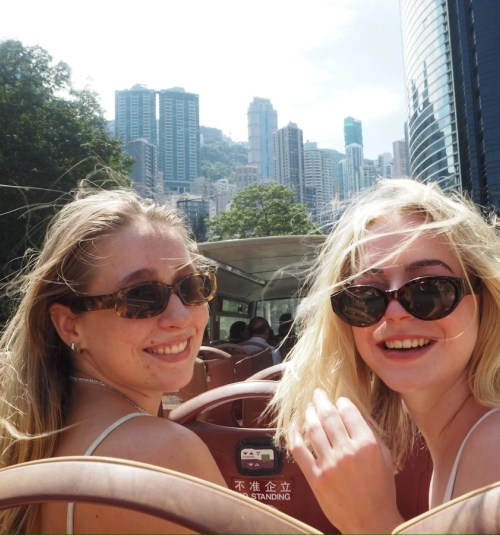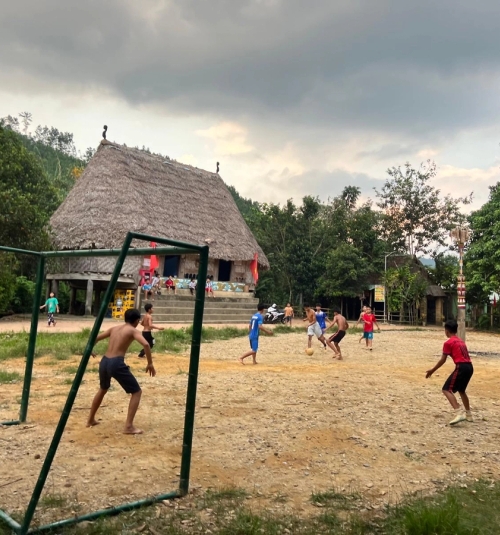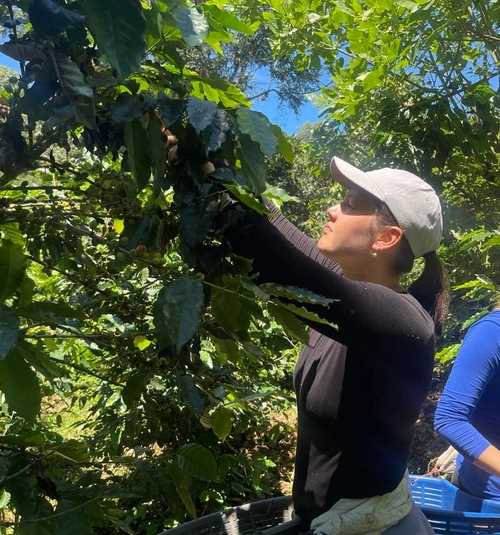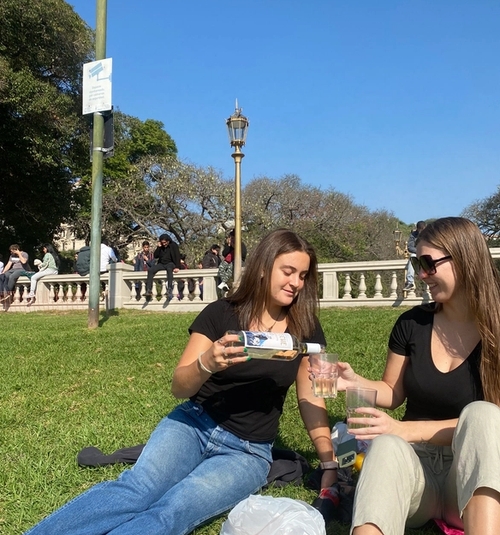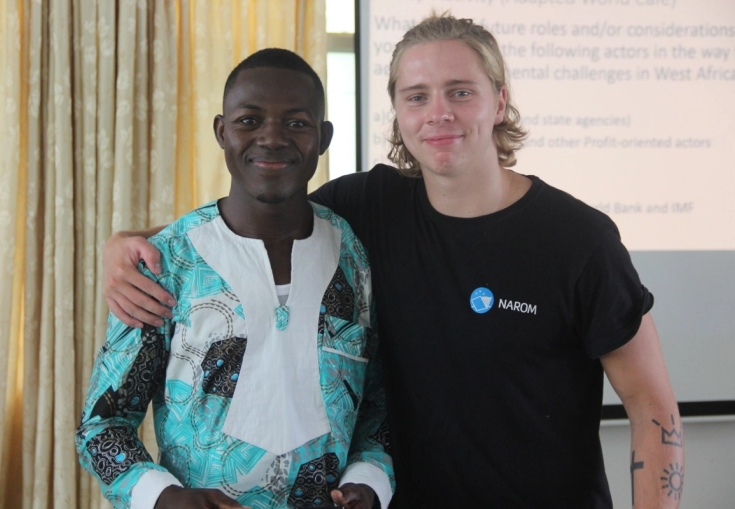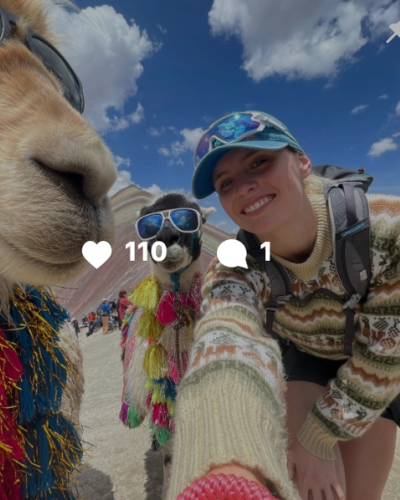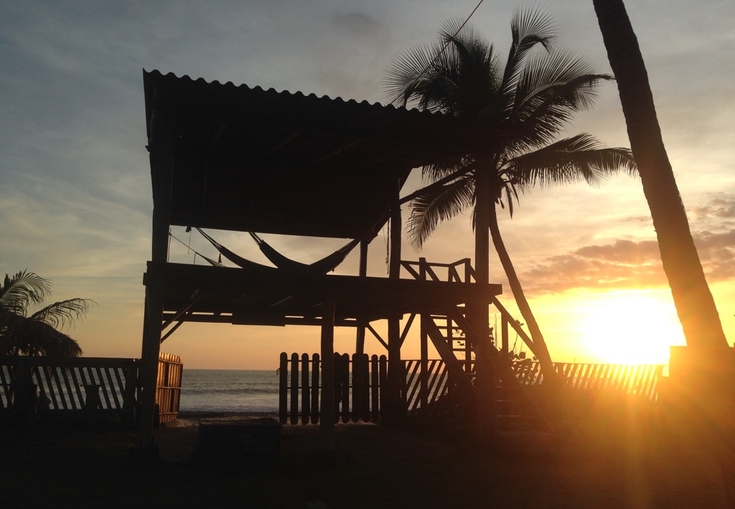
Four diligent students on the beach
Today I thought we should get to know the “average” Kulturstudier student a bit better, and gain insight into both the academic everyday life and leisure time here in León.

This text is translated using AI.
View the original article here.The beautiful beach Las Penitas is located about 30 minutes away from the university and residences in the city.
Here you can bring your books to read in the shade of the palms, and fill the breaks with surfing, beach acrobatics, and jogging in the wet sand, or perhaps just work on your tan while catching up on some much-needed sleep.
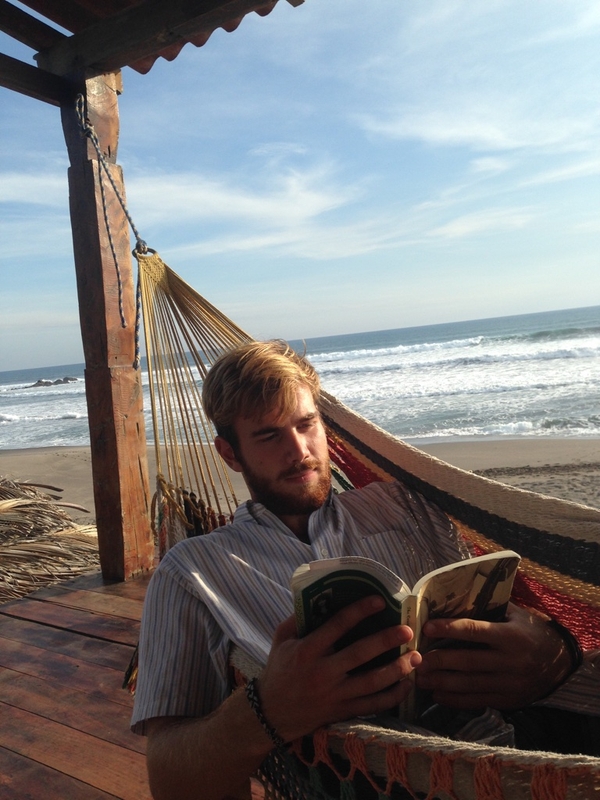
Magnus (20) on making friends
Magnus Westbye is from Asker, which he describes as probably the most child-friendly nook that Eastern Norway has to offer.
"I mostly ran around and played in all the well-padded climbing frames with my friends. As the epicenter of good values, it was sports that I engaged in from the moment I had the opportunity to start, until I no longer had the chance to continue."
As I got into my teenage years, a passion for ice hockey was gradually replaced with a love for books and music. After finishing high school, I took a three-hour bus ride westward and got off in Seljord.
Here I attended a folk high school, where we went paragliding, and roamed high and low in the mountains using various aids, whether it was skis, snowshoes, bikes, or the good old boots. It was definitely a fantastic year, as a year at a folk high school tends to be.
During the past year, Magnus pondered terribly about what to do, but he describes ending up here in Central America as a pure coincidence. “To get to explore a country so distant, which one must admit one barely knew where was, through studying the language has proven to be a very nice concept. Living here has turned out to be a warm combination of folk high school and upper secondary school.
Making friends among the other Norwegian students is going smoothly. Living close to each other, being together every single day, and experiencing so much new together, the bonds that are formed are formed quickly and strongly.
Of course, one is a bit anxious before flying alone to the other side of the world, but as a group, we were all nervous, so getting to talk, getting to know each other, and being included must not have taken more than a mere half hour before we were in full swing.
It's clear that cultural differences become apparent when you're out on the street trying to get close to the locals to practice your Spanish properly. It must be said that the Nicaraguan people are truly one of patience.
They let us try (and fail a lot) until we finally reach some sort of agreement. The people here are engaged and passionate, and striking up a conversation with them is rarely a problem, whether it's at the supermarket, the beach, or at a bar.
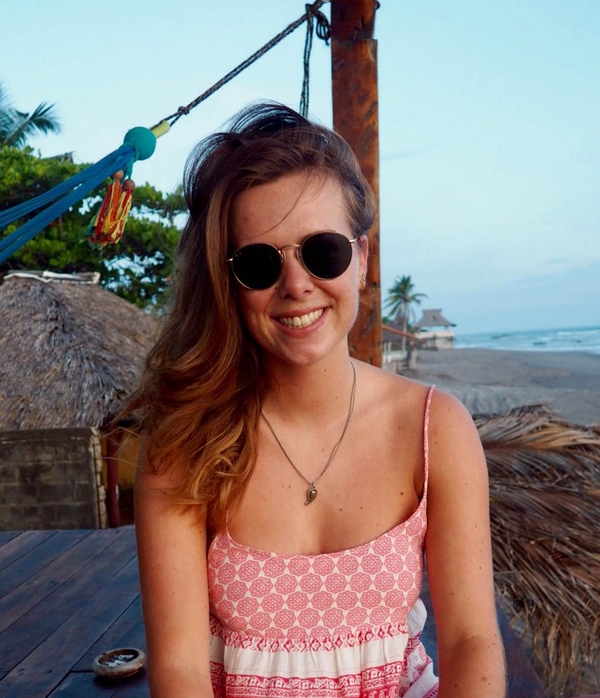
Kathrine (24) on living in León
Kathrine Adelheid Jørgensen from Bergen has just completed three years of studies in economics and law in Copenhagen, with the most important lesson being that she wants to take her life in a completely different direction than the commercial business world she felt she was on a collision course with.
"My dream is to work towards making the world a better place: I want to learn everything I can about human rights and development in developing countries."
The thought process I went through before I got here took place in Asia. What do you really do when all your study friends continue on to a master's degree, while you want to break away?
My answer was and is to travel. Here I am doing exactly what I always dreamed of doing – and wondering why I didn't do exactly this sooner: I am 'living in' the unique opportunity to get another culture under my skin, and getting a bit closer to understanding how things really work in this part of the world, which is so similar and yet different from our own. I get to 'travel deeper', experience the raw warmth and humanity of the Nicaraguans.
The Nicaraguans who are closest to me are “father” Roger, “mother” Sonja, and “little brother” Pedro. My residence here in León is actually Hostel Monkey Republic, which I share with about 30 other students from Cultural Studies.
Including Roger and Sonja (who do an amazing job keeping me and my fellow students organized), there are a total of 4 different nationalities living under the same roof.
We are a great group of diverse personalities that set ourselves apart by speaking different dialects, being of different ages, and having educational backgrounds so varied that we can boast of offering at least one craftsman, engineer, marketer, lawyer, economist, special educator, and last but not least, a strong collection of resourceful freshmen who have just completed high school.
Of course, there is a good mix of both A- and B-type people here, and it perhaps becomes most apparent when breakfast is served between 6:30 and 7:30 AM.
Some are ringing the doorbell on their way home from the morning session at the gym, while others are rolling out of bed with sleep in their eyes – yet everyone is equally grateful for the skilled chefs in the kitchen preparing a good and varied breakfast.
At 12 o'clock the joy is just as great, when the kitchen serves lunch to all the over 50 students. Both us at Monkey, the 13 students at Casa Blanca (Culture Studies' other hostel) and the students living in apartments or with families gather around the tables and gather energy for the afternoon hours.
In both Monkey and Casa Blanca, most people live in triple rooms, a few in double rooms, and some in single rooms. Our common areas are spacious, so most prefer to relax in the many hammocks, read in the study room, or play billiards.
The lights go out at 10 PM – and it becomes clear that language learning and cultural impressions have their effect on us, as it is then completely quiet and everyone gets ready for a new day filled with lots of learning.
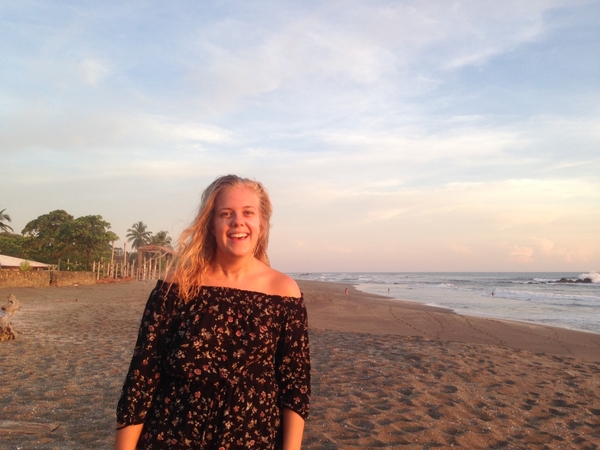
Christine (19) on school life in León
Christine Høyem from Trondheim, tough as she is, chose to travel straight from final exams and the 'russetid' celebration and summer vacation all the way to Nicaragua to learn Spanish.
The everyday study life with Kulturstudier is very different from what I'm used to at home! Basically, we have school from 8 to 5 every day, but with some gaps in between, during which we are expected to do homework.
We have three different Spanish subjects; in Redaccion, we practice writing, in Conferencia the main focus is on grammar, and in Grupo, we are groups of 5 where we really get to practice our Spanish orally. These groups were assigned based on our level, so it's easier for everyone to be active and engage in conversation.
We will have exams in all three Spanish subjects at the end of the semester, and the teachers are trying to organize the teaching in a way that we are as well prepared as possible for these. Something that is different from the university in Norway is that we get homework every class.
These are often necessary to do in order to keep up with the teaching in the next class. This is a nice way to work steadily throughout the semester.
In Latin American Studies, we have seminars and lectures. In this course, we are divided into three seminar groups where we discuss the previous lecture and talk about current topics. This subject is quite a heavy reading subject, and we have many articles to read. To make it easier to get through the stack of curriculum, a couple of students give a presentation on the week's articles in the seminar groups.
In this way, we collaborate on reading. In Latin American studies, we have take-home exams, and we have been given great freedom to choose topics, so that we can really delve into something we find exciting.
Christine says she herself is very satisfied with studying in Latin America, despite busy schedules and a lot of homework.
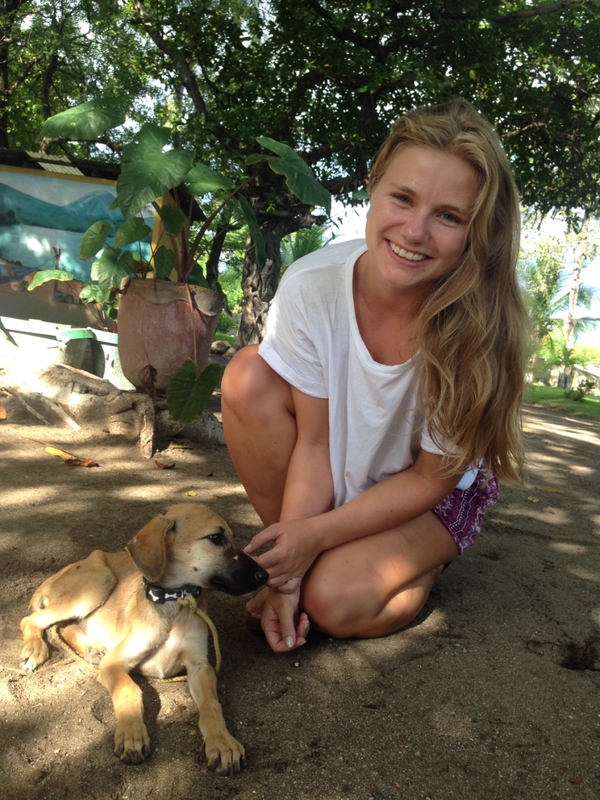
Helle (25) on her free time in Leon
Helle Maarud Andersen from Trondheim has just completed her master's degree in civil engineering at the University of Stavanger. However, she didn't feel quite ready for adult life and job hunting, and since she has always been fascinated by the Spanish language and especially by the Central American culture, she decided to travel to Nicaragua.
"Here I could learn Spanish, more about Latin American culture, and in addition, there were beaches with opportunities for surfing. Since arriving in Nicaragua and León, I haven't regretted for a second the decision to study here. We have now been here for 8 weeks and time has almost run away from us."
Much of the days obviously go to teaching and studies, but there is still plenty of time to do other things. The first week down here I started a salsa course with several others from the study. We receive instruction at the local cultural center where a group of skilled dancers try to teach us rhythmless Scandinavians some salsa steps.
There's no problem filling up the days here in León. The weeks are spent dancing, playing soccer, movie nights, or just relaxing at Monkey with, for example, a game of pool. On weekends, one can explore what the rest of the country has to offer or hang out at the beach house and practice surfing. In other words, there's not much time to be bored here.
To all travel enthusiasts and curious souls, I definitely recommend Nicaragua and León as a place to live for a few months.
